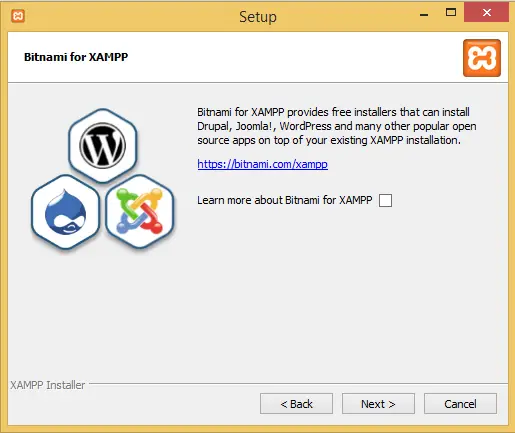
- #Apache startup problem bitnami owncloud how to
- #Apache startup problem bitnami owncloud install
- #Apache startup problem bitnami owncloud full
- #Apache startup problem bitnami owncloud verification
- #Apache startup problem bitnami owncloud code
In case another process is using that port, use another port or stop that process.Ĭheck if you have permissions to bind Apache to the requested port. Look for the pid in the second column and you’ll get more information about that process. You can then use: $ ps aux | grep process_name In the last column you’ll see the process id or process name. Replace the PORT placeholder with the correct port number, such as 80 or 443. To see which process is already using that port you can run the following from a command prompt. No listening sockets available, shutting down If another process is using that address you’ll get: (98)Address already in use: AH00072: make_sock: could not bind to address 0.0.0.0:port_number If no error is found, you will see a message similar to: Syntax OKĬheck the Apache error log file at /opt/bitnami/apache2/logs/error_log for information about why the error occurred.Ĭheck if another process is listening to that port This is the first place to look when you run into a problem when using Apache. This file includes error messages, startup messages, and any other significant events in the life cycle of the server. The error_log file is used to record important events. When a client requests a document from the server, Apache records several parameters associated with the request in this file, such as: the IP address of the client, the document requested, the HTTP status code, and the current time. The access_log file is used to track client requests. You may not use this file except in compliance with the License.Once Apache starts, it will create two log files at /opt/bitnami/apache2/logs/access_log and /opt/bitnami/apache2/logs/error_log respectively. Licensed under the Apache License, Version 2.0 (the "License")
#Apache startup problem bitnami owncloud install
#Apache startup problem bitnami owncloud how to
Please refer to the Quick Start guide if you wish to get running in just a few commands, otherwise the Using Helm Guide provides detailed instructions on how to use the Helm client to manage packages on your Kubernetes cluster. Once you have installed the Helm client, you can deploy a Bitnami Helm Chart into a Kubernetes cluster. You can find more information in the Bitnami index FAQ pinned issue.

#Apache startup problem bitnami owncloud full
Take into account that this full index is under the Github's rate limits. This full index is updated every time the truncated index file is updated. In case you need a full index, you can use it from the archive-full-index branch in the bitnami/charts Github repository. NOTE: It is important to note that the above mentioned repo is truncated so it only contains entries for the releases produced in the last 6 months. The following command allows you to download and install all the charts from this repository: To install Helm, refer to the Helm install guide and ensure that the helm binary is in the PATH of your shell. Charts are packages of pre-configured Kubernetes resources. Helm is a tool for managing Kubernetes charts. Get Started with Bitnami Charts using the IBM Cloud Kubernetes Service (IKS)įor setting up Kubernetes on other cloud platforms or bare-metal servers refer to the Kubernetes getting started guide.Get Started with Bitnami Charts using the Google Kubernetes Engine (GKE).Get Started with Bitnami Charts using the Amazon Elastic Container Service for Kubernetes (EKS).Get Started with Bitnami Charts using the Azure Kubernetes Service (AKS).Get Started with Bitnami Charts using VMware Tanzu Mission Control.Get Started with Bitnami Charts using VMware Tanzu Kubernetes Grid.The quickest way to setup a Kubernetes cluster to install Bitnami Charts is following the "Bitnami Get Started" guides for the different services:
#Apache startup problem bitnami owncloud verification
Since the container image is an immutable artifact that is already analyzed, as part of the Helm chart release process we are not looking for vulnerabilities in the containers but running different verification to ensure the Helm charts work as expected, see the testing strategy defined at TESTING.md.

#Apache startup problem bitnami owncloud code
Those containers use images provided by Bitnami through its test & release pipeline and whose source code can be found at bitnami/containers.Īs part of the container releases, the images are scanned for vulnerabilities, here you can find more info about this topic.

Each Helm chart contains one or more containers.


 0 kommentar(er)
0 kommentar(er)
